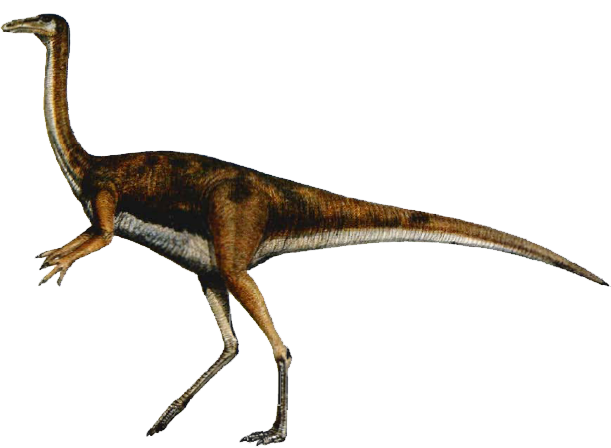Gallimimus ("chicken or rooster mimic") is a genus of ornithomimid dinosaur from the late Cretaceous period and it was a largest ostrich dinosaur to be discovered to date. It mostly differs from its relatives like Ornithomimus and Struthiomimus. Since it had a long snout ended in a broad and flat-tipped beak and its hands are designed for grasping. Normally it dug out other dinosaurs buried inside the soil with its spade like hands and open with its heavy beak.

An exciting discovery in 1965 in the gobi desert of Mongolia had led paleontologist to believe that there were much larger bird like dinosaurs. It was named by paleontologists Rinchen Barsbol in 1972 and its complete skeleton was found in Melbourne Museum.
It was quite ostrich-like dinosaur, with small head, large eyes, long neck, short arms, long legs, and a long tail. A diagnostic character of Gallimimus is a distinctly relative to the humerus length, when compared to other ornithomimids. Each claw bone of gallimimus was about 25cm long and it would have a carried a longer nail.
gallimimus Dinosaur had flexible arms equipped with long fingers and claws. It useful for the many different tasks of an omnivorous lifestyle, such as getting fruit, catching and holding prey, and digging dirt to find food. The popular science-fiction film Jurassic Park shows the probable predator prey relationship of two dinosaurs like Tarbosaurus and Gallimimus.
| Name: | Gallimimus "chicken or rooster mimic" |
| Size: | 13ft/4m long |
| Main Facts: | Gallimimus was certainly a large theropod dinosaur and it had given the descriptive name of Deinoncheirus (terrible hand) |